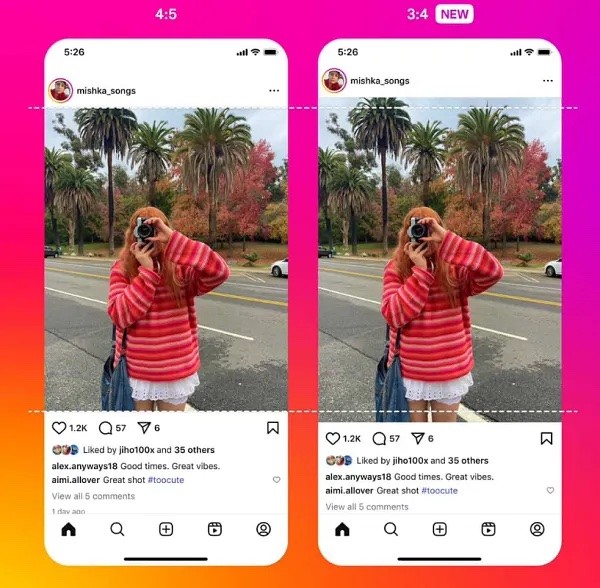Instagram has officially introduced support for the aspect ratio of 3:4, allowing photos taken on smartphones to be uploaded in their original ratio. With this update, both creators and general users can easily post photos without needing additional editing, marking a shift away from Instagram’s previous square-dominant layout.

This update applies not only to single image posts but also to carousel formats that bundle multiple photos. This eliminates the inconvenience of images being automatically cropped or enlarged. This change is particularly welcoming to users who wish to maintain the composition or intention of their photos.
Instagram once prided itself on a ‘tidy grid’ with a 1:1 square aspect ratio. However, as mobile photography became more commonplace, the gap with the 3:4 ratio commonly set by most smartphones began to be seen as a drawback, distorting carefully composed images.
According to Instagram, this update will allow photos taken on smartphones to be uploaded just as they are, enabling more natural sharing of images than before.
This enhancement is notable because it coincides with Instagram bolstering its video-focused content, such as Reels. Over half of the current Instagram feeds are filled with AI-recommended Reels. However, this feature improvement signals that static image content remains a valuable part of the platform.
Instagram first allowed non-square aspect ratios in 2015, gradually increasing the flexibility in viewing formats. The official introduction of the 3:4 ratio is an extension of this trend.
When Instagram introduced the 4:5 ratio recently, it caused significant disruption to the layout and alignment of existing posts. While this 3:4 ratio support provides more flexibility for users, some concerns persist that it may again challenge the organization of some image layouts or feed structures.